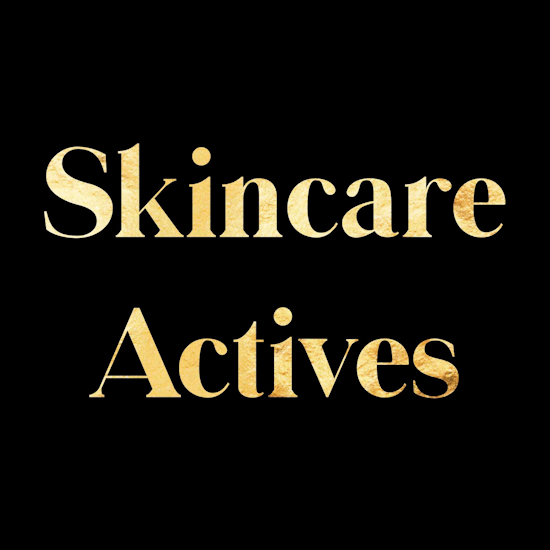
3 Top Reasons You Have Dark Spots On Your Face
Freckles on your nose are cute at age seven but similar dark spots when you’re forty-seven? Not so much. Call them age spots, liver spots or sun spots – no matter what name they go by, these patches are often signs of skin damage. Here’s what you need to know about what’s going on with your skin when hyperpigmentation occurs, why it happens, and what solutions to consider.
What Causes Dark Spots?
Whether you’re dark or fair, your skin contains a pigment called melanin. Produced by cells called melanocytes, melanin acts as a form of protection for skin. However, when hyperpigmentation occurs, your skin produces excess melanin which forms deposits, creating spots and patches darker in color than the surrounding skin. Although hyperpigmentation affects people of all skin colors, it tends to affect darker skin types more frequently. Here are three reasons why you could be suffering from dark spots:
Sun Exposure
The number one cause of dark spots is sun damage. When stimulated by harmful UV rays, melanocytes react by releasing melanin which acts as a natural sunscreen. Melanin is useful because it absorbs the energy from UV rays and redistributes it. However, the sun can trigger the production of too much melanin, causing dark patches of skin.
The sun is not just the root problem for sun spots, it also causes the dark marks that we call age spots or liver spots. This type of hyperpigmentation is also caused by sun damage, accumulated over many years of exposure. “As you age,” says Harvard Medical School, “Years of being in the sun start to add up.” Most common in adults over the age of 55, these tan, brown or black spots tend to speckle the areas most exposed to the sun: face, hands, back, feet and shoulders.
Ageing can also intensify the appearance of hyperpigmentation for two reasons. First, as we age, melanocytes decrease in number but increase in size and pigment production. Second, skin that is older tends to look thinner, paler and more translucent, emphasising the appearance of dark spots.
Hormones
When hormone levels zigzag up and down, one of the most common side effects is a change in pigmentation called melasma. Frequently seen during pregnancy, hormonal therapies or even changes in birth control, extra hormones stimulate the production of melanin. Pregnant women often develop dark patches on the nose, cheeks, jawline, forehead or chin, creating a pattern called “mask of pregnancy” or “chloasma.” This type of hyperpigmentation typically lasts until pregnancy ends or hormonal levels return to balance.
Exposure to the sun and heat can worsen the appearance of this hormonally triggered hyperpigmentation. If you suffer from melasma and hope to unwind in a sauna or a session of hot yoga, you may want to rethink your chillaxing plans. A high temperature environment can affect your hyperpigmentation, helping dark patches enlarge and spread.
Inflammation
Dark spots can sometimes develop after inflammation or an injury to the skin, especially for those suffering from acne, eczema, allergic reactions or other skin conditions. Termed post-inflammatory hyperpigmentation, this type of discoloration is the skin’s natural response to inflammation. After a wound occurs, the skin becomes inflamed and, as it heals, the skin naturally produces excess melanin which darkens the skin.
Hyperpigmentation due to inflammation is especially common after breakouts. As the irritated skin heals from acne, a dark spot is left behind, ranging in color from pink to red, purple, brown or black. The worse the inflammation, the larger and darker the spot can be. Also, there’s a reason why the experts warn you to avoid picking your acne – popping those pimples can increase the likelihood of developing a dark spot.
How To Get Rid Of Dark Spots
Now that you understand how these top three culprits cause dark spots and age spots on your face, here’s how you can tackle hyperpigmentation through both a natural skin care routine and professional treatments:
Ingredients For Uneven Skin Tone
Licorice Root
According to this medical study, licorice root extract is an effective botanical ingredient to send your dark spots packing. It improves hyperpigmentation by dispersing melanin and inhibiting the production of melanin. Dr. Michele Green, board-certified dermatologist and RealSelf contributor in New York City, explains that licorice root contains two components that help hyperpigmentation, glabridin and liquiritin: “Glabridin helps to retrain tyrosinase, an enzyme that produces melanin which leads to pigmentation. Liquiritin helps to break up and remove melanin and pigmentation in the skin.” Combined together, these two elements make licorice root a potent ingredient for hyperpigmentation.
Azelaic Acid
Another natural ingredient, azelaic acid is also powerful for erasing dark spots. This acid works by inhibiting melanocytes as well as the tyrosinase enzyme. By curbing the production of pigment at the beginning of the process, this ingredient stops hyperpigmentation before it starts.
Vitamin C
Another ingredient you’ll want to add to your arsenal for battling hyperpigmentation is Vitamin C. This study shows that Vitamin C derivatives have been shown to “decrease melanin synthesis,” an important process for decreasing the appearance of hyperpigmentation. A popular skin care ingredient, this antioxidant is effective not just for dark spots but also a whole range of solutions from collagen production to wrinkle prevention.



